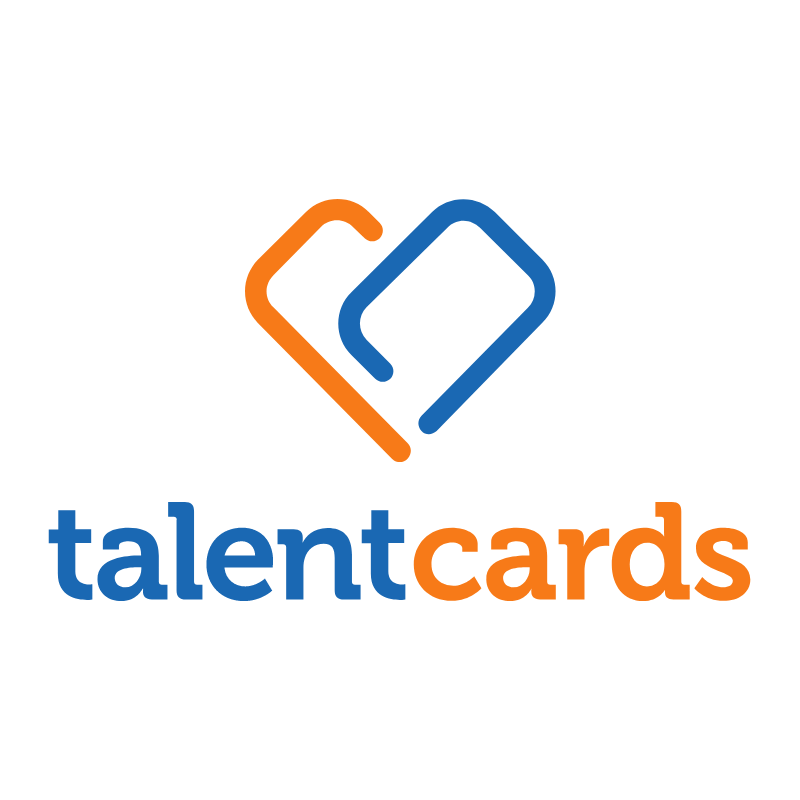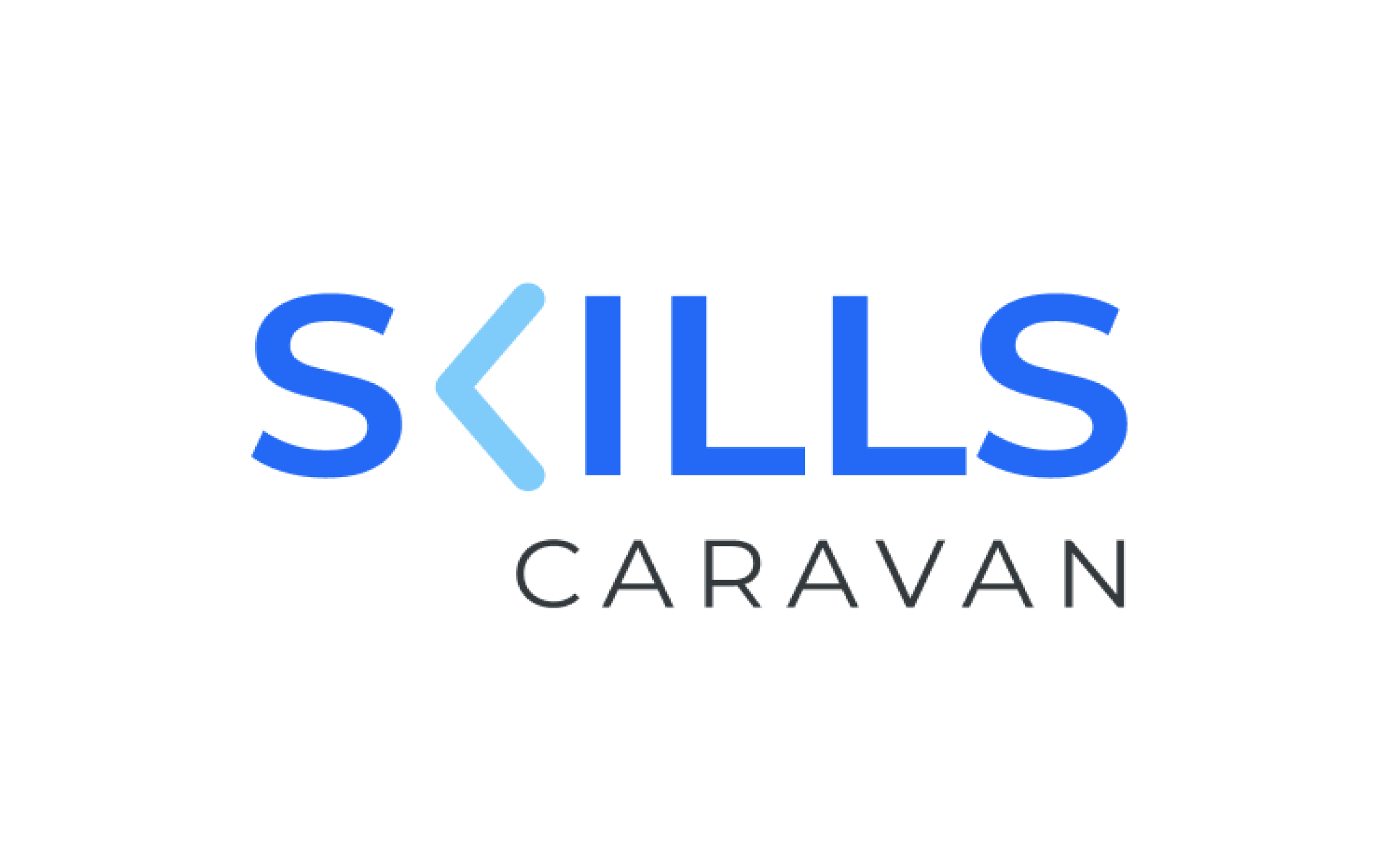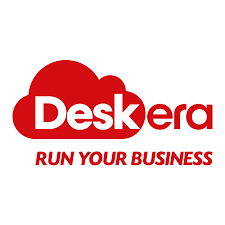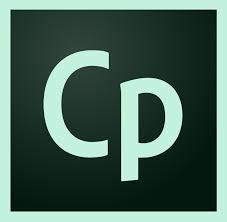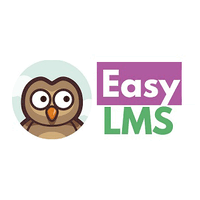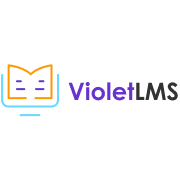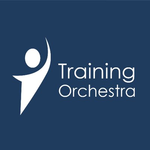Indeed, course management systems are made to work on a variety of platforms and devices. This implies that teachers and students can use their laptops, tablets, smartphones, and personal computers to access the system. Furthermore, the majority of course management systems work with a variety of operating systems, including iOS, Android, Mac, and Windows. This enables consumers to have a smooth experience on any platform or device of their choice.
List of 20 Best Course Management System
LearnDash - the premier learning management system designed for WordPress. Take your online courses to the next level with advanced course building capabilities, dynamic gamification options, and effortless integration with popular WordPress plugins...Read More LearnDash
Synap is an innovative online exam platform that offers a seamless assessment process. With its easily customizable interface and advanced analytics, educators and students can effectively track progress, improve results, and maximize resources. Empo...Read More Synap
Edoobox offers a streamlined solution for course, seminar, and event bookings. Its wide range of tools simplifies the booking process, from initial announcement to payment. With automated scheduling, participant tracking, and customizable branding, E...Read More edoobox
TalentCards is a app for mobile learning and communication designed for deskless workers. From online teams to frontline and production line workers, this user-friendly app provides instant access to vital information anytime, anywhere. Say goodbye t...Read More TalentCards
eFront Learning is a software for dynamic learning environments, is solution for your organization. Renowned by industry leaders like Supermacs, Schneider, and Honeywell, eFront delivers exceptional features to enhance employee skills and foster the...Read More eFront Learning
the revolutionary Skills Caravan LXP solution to modernize your organizations learning and development strategy. Leave outdated LMS behind and unlock the full potential of generative AI, advanced analytics, dynamic gamification, social learning, and...Read More Skills Caravan LXP
Deskera LMS is a learning management system designed to streamline employee training and development. With its intuitive interface and seamless integration capabilities, Deskera LMS is the ideal solution for businesses looking to enhance skills, trac...Read More Deskera LMS
Tutor LMS is a e-learning platform for teachers. Its sleek and intuitive interface makes course creation a breeze. Students can explore interactive quizzes and track their progress with in-depth analytics, boosting their understanding and retention...Read More Tutor LMS
Hyax is a robust platform designed to help brands, entrepreneurs, and content creators easily build and grow their online courses, membership sites, and product offerings. Our cutting-edge features simplify the management of your online business and...Read More Hyax
OpenEdX is a robust platform for online learning, providing instructors with the tools to create engaging courses that foster collaboration and creativity. Its diverse features make education accessible worldwide, breaking barriers of location. Its t...Read More OpenEdX
Discover solution for course management – Arlo Training Providers. Our intuitive platform streamlines registration, communication, and scheduling, freeing you up to deliver top-notch training. Eliminate the hassle of administrative tasks and e...Read More Arlo Training Providers
Adobe Captivate Prime – your go-to Learning Management System (LMS) for delivering tailored learning experiences across multiple devices. This versatile tool allows you to seamlessly align all corporate training programs, online and offline, t...Read More Adobe Captivate Prime
Easy LMS solution for effortless learning management. Our user-friendly web-based platform offers all the necessary features without the complexities typically associated with traditional systems. Say goodbye to cumbersome processes and hello to a st...Read More Easy LMS
Skillsoft is a leading online learning platform that provides comprehensive e-learning solutions. Our interactive courses and assessments are designed to help businesses bridge skill gaps and upskill their employees. With a loyal customer base of ove...Read More Skillsoft
Trainual solution for streamlining and organizing your business operations, training, and onboarding processes. With a centralized knowledge hub, automated workflows, and compliance enforcement, Trainual simplifies and scales your operations. Improve...Read More Trainual
Violet LMS is a tool for streamlined training management. With customizable learning paths, real-time performance insights, and gamification features, it meets the unique learning demands of your staff. Bid farewell to conventional training technique...Read More Violet LMS
uQualio is an innovative cloud-based eLearning tool designed to enhance your business through engaging and interactive video-based courses. Our platform provides a flexible and convenient solution for training your customers, employees, and partners...Read More uQualio
Valamis is a learning experience platform that is specially designed to enhance personalized learning, advanced data analysis, and seamless integration for organizations. Its adaptive learning approach empowers employees to maximize their knowledge r...Read More Valamis
Training Orchestra is a training management software designed to streamline the scheduling, resource allocation, and budget tracking processes. It replaces tedious spreadsheets with an intuitive system that caters to the needs of companies, regardles...Read More Training Orchestra
Edsby is a leading K-12 solution that facilitates efficient management of educational data and promotes effective communication among students, parents, and teachers. This comprehensive software caters to the needs of both school districts and indepe...Read More Edsby
Learn More About Course Management System
- What Is Course Management System?
- What Are The Recent Trends In Course Management System?
- Benefits Of Using Course Management System
- Important Factors To Consider While Purchasing Course Management System?
- What Are The Key Features To Look For In Course Management System?
- Why Do Businesses Need Course Management System?
- How Much Time Is Required To Implement Course Management System?
- What Is The Level Of Customization Available In Course Management System?
- Which Industries Can Benefit The Most From Course Management System?
- Conclusion
What Is Course Management System?
A Course Management System (CMS) is a software program created to make the management of courses in training companies or educational institutions more efficient. It serves as a single platform for handling all course-related tasks, such as maintaining student records, course materials, and exams. By offering resources for online teaching, learning, and assessment, a CMS primarily aims to improve the efficacy and efficiency of course delivery.
It gives teachers the ability to plan and present classes, produce and distribute course materials, interact with students, mark assignments, and monitor their progress. Conversely, students have the ability to access course materials, engage in conversations, turn in assignments, and get instructor feedback. A CMS makes it simple to arrange and distribute course materials to students, including lecture notes, presentations, and assignments.
Additionally, it facilitates online contact and collaboration between students and their teachers. This fosters a more dynamic and inclusive learning environment in addition to improving students' academic performance and engagement. Additionally, a CMS offers a variety of assessment capabilities, including as gradebook management and online tests, which facilitate teachers' ability to assess student performance and give prompt feedback.
Additionally, this makes it possible to grade assignments and monitor students' progress more effectively, saving teachers and students time and effort. A successful CMS should also be available on a variety of platforms, have an easy-to-use interface, and have customizable choices to meet the unique requirements of a school or business. Data analytics and reporting, interaction with other learning resources, and support for many languages and course formats are further features to search for.
What Are The Recent Trends In Course Management System?
Course management systems are an essential part of educational institutions because of the major transition in the field of education toward digital learning and technology integration. These systems give professors and students a single platform for communication and collaboration while also assisting in the organization, tracking, and delivery of course materials, assignments, and assessments. Recent developments in data analytics, user experience, and technology have all influenced course management system (CMS) trends. In order to assist you in selecting a CMS for your organization, let's examine these new developments in more detail.
1. Mobile-Friendly Design: CMS providers have begun to offer mobile-friendly designs for their platforms since most students access course materials and finish assignments on their mobile devices. Students can now access their course materials while on the road thanks to this trend, which makes learning more flexible and easy.
2. Integration With Learning Tools: It has grown in popularity to integrate CMS with outside learning resources including interactive learning programs, virtual classrooms, and plagiarism detectors. Students benefit from a more comprehensive educational experience because to this integration, which also makes it easier for teachers to present curriculum.
3. Personalized Learning: CMS providers are implementing features like adaptive learning and personalized content recommendations to meet the demands of individual learners as a result of the growing popularity of personalized learning in recent years. In an effort to improve student engagement and retention, educational institutions have broadly adopted this approach.
4. Analytics And Reporting: In order to track student progress, spot learning gaps, and enhance course delivery, institutions now need to have data analytics and reporting capabilities. These days, a lot of CMS suppliers come with integrated analytics and reporting features that offer insightful data on student engagement, performance, and participation.
5. Cloud-Based Systems: Because they provide better collaboration, scalability, and simpler access to course content, cloud-based CMS systems have taken the market by storm. Cloud computing has also played a key role in cutting expenses and lowering CMS's cost to small and medium-sized organizations.
Benefits Of Using Course Management System
Using a course management system has the following advantages:
1. Centralized Organization: All of your course materials and activities may be effectively arranged and managed in one location with the help of a course management system. You can save time and effort by doing away with the requirement for manual procedures or various platforms.
2. Simple Access To Course Content: Students can readily access course materials at any time and from any location with the help of a course management system. This provides students the freedom to learn at their own speed and removes the requirement that they physically attend class.
3. Interactive Learning Experience: To encourage student interaction and engagement, course management systems provide a range of tools and features, including discussion boards, virtual classrooms, and multimedia content. As a result, learning becomes more engaging and productive.
4. Time-Saving Automation: Automated features like feedback and grading are built into course management systems, saving instructors a great deal of time and minimizing human labor. This frees them from administrative duties so they may concentrate on developing meaningful learning experiences.
5. Real-Time Progress Tracking: Students and teachers can monitor progress in real-time using a course management system. This enables prompt intervention, if necessary, to guarantee student success and offers insightful information about the course's efficacy.
6. Personalized Learning: Depending on each student's unique requirements and development, course management systems can tailor their education. This guarantees that pupils get a personalized education, which improves their memory and comprehension of the subject matter.
7. Improved Communication: Instructors and students can communicate more easily thanks to a course management system. This makes it possible to communicate more quickly and directly, work together more, and comprehend the requirements of the course.
8. Data Analysis And Reporting: Teachers can monitor student performance and pinpoint areas for development by using a course management system to acquire useful data and analytics. This makes it possible for them to make data-driven judgments and raises the course's overall efficacy.
9. Cost-Effective: Printing and delivering physical course materials is no longer necessary when using a course management system, which saves money and time. Additionally, it lessens the requirement for actual classroom space, which makes it an affordable option for educational establishments.
10. Scalability: Course management systems can grow to meet an educational institution's expanding needs. Whether the number of students or courses increases, a course management system can handle the expansion and offer everyone a smooth educational experience.
Important Factors To Consider While Purchasing Course Management System?
Selecting the ideal Course Management System (CMS) for your school is an important choice. It has an effect on your budget as well as your pupils' entire educational experience. Choosing the best option can be overwhelming due to the abundance of options on the market. Here are some crucial elements to take into account when buying a CMS in order to assist you in making an informed choice:
1. User-Friendliness: The system's ease of use should be taken into account first. For both teachers and pupils, an intuitive user interface and navigation are crucial. Seek out a CMS with an easy-to-use interface and unambiguous instructions.
2. Customization Of Courses: Your CMS should enable you to adapt your courses to the teaching strategies and curriculum of your university. For a more interesting educational experience, it should also have elements like discussion boards, interactive tests, and multimedia integration.
3. Compatibility And Accessibility: Verify that the CMS works with various operating systems and devices. It should also include multiple language options and be accessible to students with impairments.
4. Data Management And security: As a purchaser, you should confirm that the CMS has strong security protocols in place to safeguard the information of your pupils. To protect your data, look for features like firewalls, encryption, and frequent backups.
5. Technical Support: The seamless operation of your CMS depends on having a dependable technical support staff. Seek out a supplier who provides 24/7 help and support in the event of any technological difficulties.
6. Cost And Scalability: Take into account the CMS's purchase and maintenance costs, as well as any extra charges for upgrades and add-ons. Additionally, consider the system's scalability and whether it can handle future expansion or modifications within your organization.
7. System Integration: Other tools and systems used by your organization, such Learning Management Systems (LMS) and Student Information Systems (SIS), should be able to be integrated with your CMS. This will guarantee a smooth transfer of information and data between systems.
8. User Reviews And Demos: Read user reviews and request vendor demos before deciding on a product. This will help you make an informed choice by providing you with a better grasp of each CMS's advantages and disadvantages.
What Are The Key Features To Look For In Course Management System?
Finding particular characteristics that will best meet your organization's demands is essential while looking for a course management system (CMS). The following are important factors to take into account while comparing various CMS options:
1. User-Friendly Interface: A CMS's user-friendly interface should be the first feature you search for. This means that both teachers and students will find it straightforward to use because to its intuitive design, clear instructions, and simple navigation. A well-designed interface can facilitate learning by cutting down on confusion and saving time.
2. Course Creation And Management: Teachers should be able to design and manage courses with ease using a good CMS. This covers functions like making course materials, scheduling classes, and monitoring student progress. To make the process easier, several CMSs also provide templates for creating courses.
3. Communication Tools: In an online learning environment, effective communication is crucial. Seek out a CMS that provides a range of communication options, including chat rooms, discussion boards, and messaging apps. Students and teachers may work together more effectively and communicate more effectively with the help of these tools.
4. Content Management: Another important aspect to take into account is content management. Instructors should be able to post many kinds of information, including documents, videos, and quizzes, using a CMS. Additionally, it ought to include capabilities like version control and organized content organization.
5. Assessment And Grading: To assess students' progress, assessment and grading tools are essential. Seek out a CMS that provides a range of assessment styles, including tests, assignments, and quizzes. Additionally, confirm that the platform has a strong grading mechanism that facilitates simple feedback and grading.
6. Customization: Since every organization has unique needs, a CMS should be adaptable to these needs. Choose a platform that enables you to alter the features, branding, and course design to suit the objectives and core values of your company.
7. Integration: A quality CMS should be able to interface with other programs, including content sharing platforms, video conferencing tools, and learning management systems (LMS). For both teachers and students, this integration can improve the educational process and expedite procedures.
8. Mobile Compatibility: Having a CMS that is mobile-friendly is becoming more and more crucial as online learning keeps expanding. Choose a platform that is easy to use and navigate on mobile devices thanks to its responsive design.
9. Data Analytics: This tool is helpful for monitoring student development and assessing how well courses are working. Data analytics solutions that offer insights into course performance, student engagement, and other important indicators should be available through a quality CMS.
10. Technical Support: Finally, confirm that the CMS offers strong technical assistance. Seek out platforms with round-the-clock assistance and a committed staff to help with any questions or technical problems that may come up.
Why Do Businesses Need Course Management System?
The need for ongoing education and skill development is growing in the fast-paced, fiercely competitive business environment of today. Businesses must invest in effective and efficient training programs for their employees if they want to stay ahead of the competition and keep up with the always changing industry. A course management system (CMS) is useful in this situation. Businesses can create, administer, and deliver their training programs and courses using a software platform called a course management system.
CMS offers businesses a complete solution to optimize their training procedures with features including course building, student enrollment, progress tracking, and assessment tools. Businesses want a CMS primarily to improve the abilities and expertise of their workforce. Employee productivity, job performance, and business growth can all be enhanced by a well-designed training program.
Businesses may quickly develop and distribute specialized courses that meet the unique learning requirements of their staff by using a content management system (CMS). Additionally, CMS makes it possible to handle courses and learning resources effectively and centrally. This saves the company time and money by doing away with the need for manual tracking and lowering administrative workload.
Additionally, companies may analyze employee growth and pinpoint knowledge gaps or areas for improvement with real-time tracking and reporting. A CMS's adaptability and accessibility are further advantages. Training in the traditional classroom is becoming outdated due to the growth of remote work and international teams. Businesses can offer online classes that are accessible on any device, at any time, and from any location with the use of a CMS.
This guarantees that all workers, wherever they may be, have access to training and may remain current with the newest techniques and trends in the business. A CMS can also assist companies in reducing their training expenses. CMS lowers printing and distribution costs by doing away with the requirement for tangible training materials like manuals and textbooks. Additionally, companies may better utilize their training expenditure if they can monitor employee growth and pinpoint areas for development.
How Much Time Is Required To Implement Course Management System?
The size of your company, your unique needs, and the degree of assistance you require from the CMS provider are some of the variables that can affect how long it takes to build a course management system (CMS). The installation procedure often takes a few weeks to many months. Initial planning, system configuration, data migration, user training, and final testing are usually included in this schedule.
The implementation procedure might be finished faster for smaller businesses with less complex requirements. Larger companies with more complicated requirements, however, might need additional customisation, which would lengthen the implementation time. The advantages of a properly implemented CMS can be substantial in terms of enhancing productivity, teamwork, and general course management success, even though the initial setup may take some time.
To guarantee a seamless implementation process, it's critical to have a firm grasp of your unique needs and expectations when thinking about a CMS for your company. Working closely with the CMS provider is also essential to setting a reasonable timeframe and maintaining constant communication to handle any possible problems. In the end, investing the effort needed to deploy a CMS is essential if you want to enjoy the long-term advantages of a successful and efficient course management system.
What Is The Level Of Customization Available In Course Management System?
Digital platforms called course management systems (CMS) are made to make it easier to create, administer, and deliver educational courses. CMS has grown to be a vital tool for institutions and teachers as eLearning gains traction. The degree of customization a CMS offers is one of the most important things to take into account. The degree of customisation offered by the various CMS vendors on the market varies. While some systems offer a high degree of flexibility, enabling users to completely customize the platform to their needs, others give a simple template with few possibilities. Both the overall success of a course and the user experience can be impacted by the degree of customisation offered by a CMS.
When evaluating a CMS's degree of customization, bear the following aspects in mind:
1. User Interface And Design: Users can customize the look and feel of their courses with content management systems (CMS) that provide a great degree of customisation. This entails altering the layout, fonts, color scheme, and logos. This helps ensure uniformity throughout all courses, which is especially advantageous for organizations with unique branding guidelines.
2. Course Content: Creating an effective learning environment and keeping students interested depend heavily on the capacity to modify the course material. Advanced features that can be tailored to the unique requirements and learning preferences of the target audience are provided by certain CMSs, including gamification, interactive multimedia, and evaluation tools.
3. Integrations: Adding third-party tools and resources to the CMS is another way to customize it. This makes it possible for learning to be more thorough and individualized. To improve the CMS's functionality, institutions can incorporate their favorite tools, like learning analytics, video conferencing, and collaborative software.
4. User Management: CMS suppliers differ in how customizable their user management capabilities are. While some systems provide more comprehensive control with bespoke roles and permissions, others may only offer basic user management features like role-based access. Large institutions with a variety of users, including administrators, teachers, and students, may find this very helpful.
5. Reports And Analytics: Measuring the performance of a course requires efficient evaluation and tracking of student progress. High levels of customisation in a CMS enable comprehensive reporting and analytics, offering insightful data on learner performance and engagement. Future courses can then be improved by using this data to guide data-driven decisions.
Which Industries Can Benefit The Most From Course Management System?
Organizations now need continual training and development to remain competitive in the fast-paced, ever-changing business environment of today. Course Management Systems (CMS) have become an important tool to improve and expedite training procedures as remote work and virtual learning have grown in popularity. A strong CMS can be very helpful to industries that need ongoing education, certification programs, and employee training. These sectors consist of:
1. Education: CMS can be used by colleges and universities to handle student communications, assignments, grades, and course materials. Additionally, it provides virtual classrooms, which increase the accessibility and interactivity of remote learning.
2. Healthcare: To provide high-quality care, staff members in the healthcare sector must constantly upgrade their knowledge and abilities. Healthcare firms may successfully manage compliance courses, employee training, and progress tracking with the use of a CMS.
3. Corporate: Employers of all sizes and in a variety of industries can utilize a CMS to train staff members on job-specific skills, software systems, business regulations, and procedures. Additionally, it makes training more efficient and effective by enabling customized learning routes.
4. Retail And Hospitality: Since these sectors mostly depend on the ability to provide excellent customer service, it is essential that staff members receive frequent training. A CMS can offer training on business culture, customer service, and product expertise, which will increase employee retention and customer satisfaction.
5. Government: Employees of government organizations frequently need specific training and credentials. By allowing staff members to attend courses online and monitor their progress, a CMS can expedite the procedure and lower expenses and administrative strain.
Conclusion
Following extensive investigation and analysis, it is clear that corporations and educational institutions wishing to optimize their online learning procedures would greatly benefit from investing in a Course Management System (CMS). The advent of remote learning and digitization has made a complete CMS more of a need than a luxury.
We have covered the main characteristics, advantages, and factors to take into account while selecting a CMS in this buyer's guide. Additionally, we have included comprehensive evaluations of the leading CMS suppliers available, enabling you to choose wisely depending on your requirements and financial constraints. A CMS may greatly increase the efficacy and efficiency of your e-learning initiatives, regardless of your organization's size—small, large, or training.
These systems provide a variety of tools to improve the learning process and encourage student involvement, from automated course management to intuitive user interfaces. Although each business may have unique needs, it is generally agreed that a successful CMS should be able to consolidate course materials, give strong tracking and reporting capabilities, and provide efficient communication routes.
Additionally, it should be flexible enough to interface with your current systems and change to meet your evolving demands. In the end, the correct CMS may improve the caliber of your online courses while saving you time, money, and effort. Therefore, we strongly advise taking into account every factor covered in this article in order to make an informed choice and select a CMS that best meets the requirements of your company. You may open up a world of limitless opportunities in online learning with the correct CMS in place.
Course Management System FAQ's
Can Course Management System Be Accessed Across Multiple Devices And Platforms?
Is Course Management System Future-Proof And Adaptable To Emerging Technologies Like Ai, Blockchain or Iot?
It is true that course management systems are made to be flexible and future-proof. To make sure they can interface with emerging technologies like AI, blockchain, and IoT, these systems employ sophisticated programming techniques and adhere to industry standards.
They are continuously changing to stay up with the most recent developments in the field of education through frequent upgrades and enhancements. Consequently, making an investment in a course management system guarantees that your organization will be prepared to meet future demands.
Is There A Free Trial Offered To Assess Course Management System Before Committing?
Indeed, a lot of course management systems give prospective users a free trial period. This enables you to investigate and evaluate the system's features and capabilities before to committing. To aid with your decision-making, you can also get input from teachers and students throughout this trial time. Make sure to inquire about the duration and terms of the free trial offer from the particular CMS provider.
Does Course Management System Offer Data Security Features And Meet Regulatory Compliance Standards?
Indeed, in order to protect user data, Course Management Systems (CMS) provide data security measures and adhere to legal requirements. To safeguard sensitive data, these systems make use of encryption, secure servers, and frequent backups. Furthermore, the majority of CMS comply with FERPA and GDPR, meaning they meet the requirements for managing the privacy of student data. This guarantees that user information is always kept private and safe.
Can Course Management System Integrate Seamlessly With Existing Tools And Platforms?
Indeed, the majority of contemporary course management systems may easily interact with current platforms and tools. This implies that you may quickly integrate your CMS with other programs, like learning analytics platforms or student information databases, to improve student learning and expedite administrative duties.
You can easily share resources, track progress, and transfer data in one location with good integration, which will increase the efficiency and effectiveness of your teaching process.




